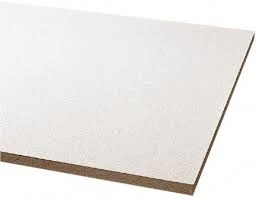10 月 . 17, 2024 00:24 Back to list
what is mineral fiber board
What is Mineral Fiber Board?
Mineral fiber board, also known as mineral wool board or mineral fiber insulation board, is a type of building material made primarily from mineral fibers, which are derived from natural or recycled materials. These boards are commonly used in construction and insulation applications due to their beneficial properties, such as fire resistance, thermal insulation, and sound attenuation.
Composition and Manufacturing Process
Mineral fiber boards are typically made from a combination of natural minerals such as basalt, glass, or slag. These materials are heated to high temperatures to create molten rock-like substances. Once melted, they are spun into fine fibers, which are then collected and formed into mats. The mats are hardened through pressing and curing processes, resulting in a rigid board that maintains the desirable properties of the original fibers.
Some manufacturers also incorporate recycled materials into their mineral fiber products, enhancing their sustainability. The use of recycled content not only reduces waste but also minimizes the demand for virgin raw materials, making mineral fiber boards a more environmentally friendly option in construction.
Properties of Mineral Fiber Board
One of the primary advantages of mineral fiber boards is their excellent thermal insulation properties. They help regulate indoor temperatures by preventing heat loss in winter and keeping spaces cooler in summer. This quality is essential for energy efficiency in buildings and can lead to lower heating and cooling costs.
In addition to thermal insulation, mineral fiber boards are also known for their soundproofing capabilities. Their dense structure helps absorb sound, making them an ideal choice for spaces requiring acoustic control, such as offices, theaters, and classrooms. This sound attenuation quality contributes to a more comfortable and productive environment.
Another crucial attribute of mineral fiber boards is their fire resistance. Many mineral fiber products have a high fire rating, making them suitable for use in applications where fire safety is a concern. They do not burn easily and can help prevent the spread of flames, providing crucial time for occupants to evacuate in case of a fire.
what is mineral fiber board

Applications of Mineral Fiber Board
Mineral fiber boards are versatile and can be used in a variety of applications. They are commonly utilized for insulation in walls, ceilings, and floors, significantly improving energy efficiency in residential and commercial buildings. Additionally, they are often used as fireproofing materials in high-rise buildings, schools, hospitals, and industrial facilities.
Beyond insulation, mineral fiber boards are also widely employed in acoustical ceiling tiles and wall panels. Their sound-absorbing qualities make them an excellent choice for creating quieter spaces, especially in environments with high noise levels.
Furthermore, these boards are easy to handle and cut, enabling quick installation. This convenience can save time during the construction process, leading to overall project efficiency.
Environmental Considerations
With growing awareness of environmental issues, many manufacturers are focusing on producing eco-friendly mineral fiber boards. Using recyclable materials and minimizing waste in production are key strategies to enhance sustainability. Additionally, mineral fiber boards can contribute to LEED certification in green building projects, recognizing their role in promoting energy efficiency and reducing environmental impact.
Conclusion
Mineral fiber board is an invaluable material in modern construction, providing excellent thermal insulation, sound absorption, and fire resistance. Its versatility in various applications, combined with the potential for sustainable manufacturing, makes it a favorable choice for builders and architects looking to create energy-efficient and safe spaces. As the demand for high-performance building materials continues to rise, mineral fiber boards will undoubtedly play a crucial role in shaping the future of sustainable architecture.
-
Revolutionizing Interior Design with Ceilings t grid Suspended SystemNewsOct.29,2024
-
Revolutionizing Ceiling Design with ceiling access panel with Gypsum Tile WaterproofNewsOct.29,2024
-
Revolutionizing Interior Design with PVC Gypsum Ceiling: A Comprehensive GuideNewsOct.29,2024
-
Elevating Interior Design with High quality Mineral Fiber Ceiling TilesNewsOct.29,2024
-
Revolutionizing Interior Design with PVC Gypsum Ceiling: A Comprehensive GuideNewsOct.29,2024
-
Elevating Interior Design with High-Quality Mineral Fiber Ceiling Tiles: A Comprehensive GuideNewsOct.29,2024







